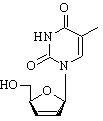The FDA has approved new indications for Bristol-Myers Squibb's nucleoside analogues Zerit (stavudine) and Videx (didanosine), each of which may be used as a first-line component of a combination anti-retroviral therapy regimen for HIV-1 infected patients.
The major toxicity of Videx is pancreatitis, which has been fatal in some cases. The major clinical toxicity of Zerit is peripheral neuropathy, which may resolve if stavudine is withdrawn promptly. Lactic acidosis and severe hepatomegaly with steatosis, including fatal cases, have been reported with the use of nucleoside analogues alone or in combination.
BMS said it is seeking to expand the role of Zerit in the U.S. and investigating its use in multiple combination regimens with other nucleoside analogues, non-nucleoside analogues and protease inhibitors. BMS also is evaluating other formulations for Videx that would eliminate the need for buffers and antacids and improve upon current Videx dosing.
COPYRIGHT 1999 Lebhar-Friedman, Inc.
COPYRIGHT 2000 Gale Group



